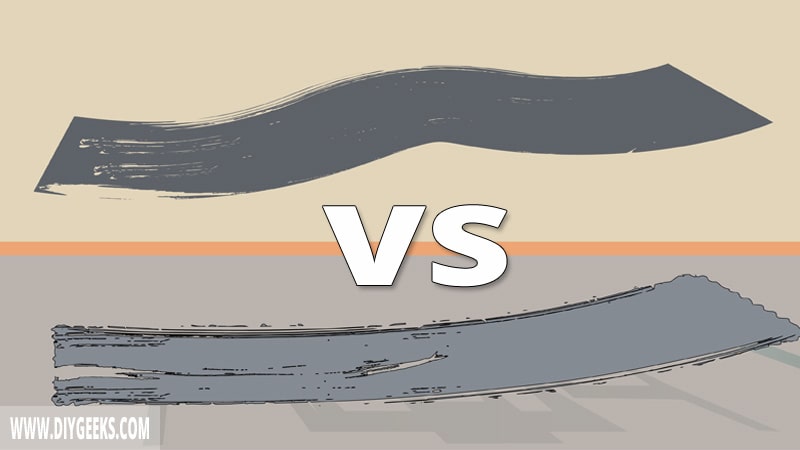Primer is a preparatory coating used before painting a surface. But, how should a primer coating be?
The primer coating doesn’t need to be perfect or even, but it must cover the whole surface where the paint is supposed to be applied and seal imperfections.
The purpose of the first primer coating is to cover imperfections, cracks, and holes. It isn’t supposed to be streaky or have multiple color shades.
Does the Primer Coating Need to be Even?

The primer coating doesn’t need to be even unless you want to apply a transparent (clear) coat over it. Clear coats, such as polyurethane, reveal the texture of the undercoat — if the texture isn’t even, the finish won’t be even or smooth.
The primer coating doesn’t need to be even when applying multiple paint coatings over it. Multiple thick coats of paint will cover the uneven primer and produce an even and smooth finish.
The primer coating must be even if you apply one (1) coat of paint only. One (1) coat of paint isn’t enough to cover or fill the undercoat so the finish will look deformed or uneven.
The primer coating shouldn’t be deformed or rough as the finish will look deformed too, unless you apply multiple coats of paint. If the primer coating is rough, the finish will be rough, too. This happens if you apply primer wrongly with a roller and leave irregular lines or patterns on the finish.
Note: Regardless if the primer is even or out, the paint will stick over it. An uneven base coat will only affect the finish quality (smoothness).
Is Primer Supposed to Look Streaky?
Primer isn’t supposed to look streaky or have multiple color shades.
While primer doesn’t need to fully cover the old paint, the old paint shouldn’t bleed through the primer. The color shade and quality of the finish will be affected if the old paint is showing.
For instance, to paint over a dark shade finish you must apply two (2) coats of primer to properly cover it. If you don’t properly cover the dark shade finish, it will bleed through and stain the new light finish.
To prevent a streaky primer finish, use high-quality primer and roller when applying it, apply even coatings, and apply more coatings than necessary to properly cover the surface. Optionally, sand between coats of primer with fine-grit sandpaper to remove old paint stains from the finish.
Does the First Primer Coat Need to Cover the Whole Surface?
The first primer coat needs to cover the whole surface where the paint is supposed to be applied. The coating doesn’t need to be smooth, fine, or even, it just needs to cover the entire surface.
The purpose of the first primer coat is to cover (or seal) imperfections, cracks, or holes in the surface. The second primer coat’s purpose is to cover the old paint completely (if any) and provide an undercoat for the paint to stick to. That’s why applying two (2) coats of primer is recommended when covering old paints.
Note: The first primer coat shouldn’t be blotchy, streaky, sticky, or drippy — instead it must be textured and dry so the next coating can stick over it.
Can You Paint over Uneven Primer?
You can paint over uneven primer coating if you are using self-leveling or thick paint. Self-leveling paints are designed to produce a smooth (and even) finish, regardless of how even the undercoat is. A thick paint coating will fill and seal an uneven undercoat.
Don’t paint over uneven primer with light (or thin) paint coatings as it won’t cover it properly and will produce an uneven finish with imperfections. Thin paint coatings tend to produce bubbles (or paint pimples) if used over uneven surfaces as its finish tears up easier.
Don’t paint over streaky primer as the paint won’t cover it properly and the old coating will bleed through. To paint over streaky primer, use thick coats or apply more than needed coats.
To apply primer evenly, do the following things.
- Apply light coats. Heavy coats are more difficult to control and can lead to runs and drips.
- Allow enough dry time before re-coating.
- Apply it with a paintbrush.
- Don’t mix different types of primers.
- Allow the final coat to dry for at least 1 hour before painting.
- If you apply multiple coats, sand between the coats.
Related Read: What Color Of Primer Should You Use?
[sc name=”primer-perfect-even”]


